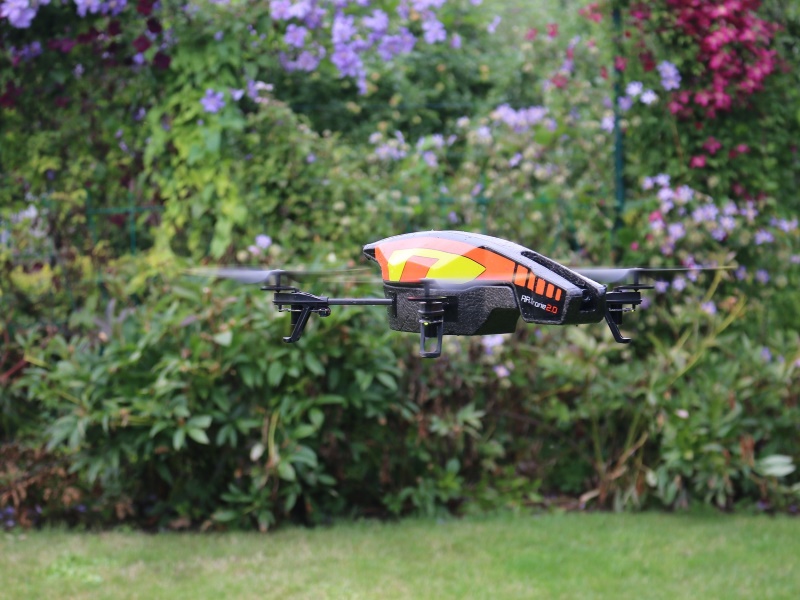- Home
- Science
- Science News
- Drones That Visually Coordinate on Their Own Soon
Drones That Visually Coordinate on Their Own Soon

The drones will be able to do their work without human input, radar or even GPS satellite navigation, said the team from University of Queensland.
"We study how small airborne creatures such as bees and birds use their vision to avoid collisions with obstacles, fly safely through narrow passages, control their height above the ground and more," said lead researcher and Professor Mandyam Srinivasan.
"We then use biologically-inspired principles to design novel vision systems and algorithms for the guidance of UAVs," he added in a university statement.
At first glance, insects and birds have very different brains in terms of size and architecture, yet the visual processing in both animals is very effective at guiding their flight.
"Bees' brains weigh a 10th of a milligram and carry far fewer neurones than our own brains; yet the insects are capable of navigating accurately to food sources over 10 km away from their hive," said Srinivasan.
The team compares the flight of bees and budgies in particular because they are easy animals to study.
"The study of their behaviour could also reveal some of the basic principles of visual guidance in a number of organisms including humans," he noted.
Comparing the flight behaviours of these animals using high-speed cameras will lead to drastically improved UAV guidance systems.
"These UAVs could be incredibly useful for applications like surveillance, rescue operations, defence, and planetary exploration," Srinivasan explained.
Get your daily dose of tech news, reviews, and insights, in under 80 characters on Gadgets 360 Turbo. Connect with fellow tech lovers on our Forum. Follow us on X, Facebook, WhatsApp, Threads and Google News for instant updates. Catch all the action on our YouTube channel.
Related Stories
- Samsung Galaxy Unpacked 2025
- ChatGPT
- Redmi Note 14 Pro+
- iPhone 16
- Apple Vision Pro
- Oneplus 12
- OnePlus Nord CE 3 Lite 5G
- iPhone 13
- Xiaomi 14 Pro
- Oppo Find N3
- Tecno Spark Go (2023)
- Realme V30
- Best Phones Under 25000
- Samsung Galaxy S24 Series
- Cryptocurrency
- iQoo 12
- Samsung Galaxy S24 Ultra
- Giottus
- Samsung Galaxy Z Flip 5
- Apple 'Scary Fast'
- Housefull 5
- GoPro Hero 12 Black Review
- Invincible Season 2
- JioGlass
- HD Ready TV
- Laptop Under 50000
- Smartwatch Under 10000
- Latest Mobile Phones
- Compare Phones
- OnePlus Ace 6T
- OPPO A6x 5G
- Samsung Galaxy Z TriFold
- Poco F8 Ultra
- Poco F8 Pro
- Huawei Mate 80 RS Master Edition
- Huawei Mate 80 Pro Max
- Huawei Mate 80 Pro
- Asus ProArt P16
- MacBook Pro 14-inch (M5, 2025)
- Poco Pad M1
- Poco Pad X1
- Just Corseca Skywatch Pro
- Honor Watch X5
- Acerpure Nitro Z Series 100-inch QLED TV
- Samsung 43 Inch LED Ultra HD (4K) Smart TV (UA43UE81AFULXL)
- Asus ROG Ally
- Nintendo Switch Lite
- Haier 1.6 Ton 5 Star Inverter Split AC (HSU19G-MZAID5BN-INV)
- Haier 1.6 Ton 5 Star Inverter Split AC (HSU19G-MZAIM5BN-INV)

















